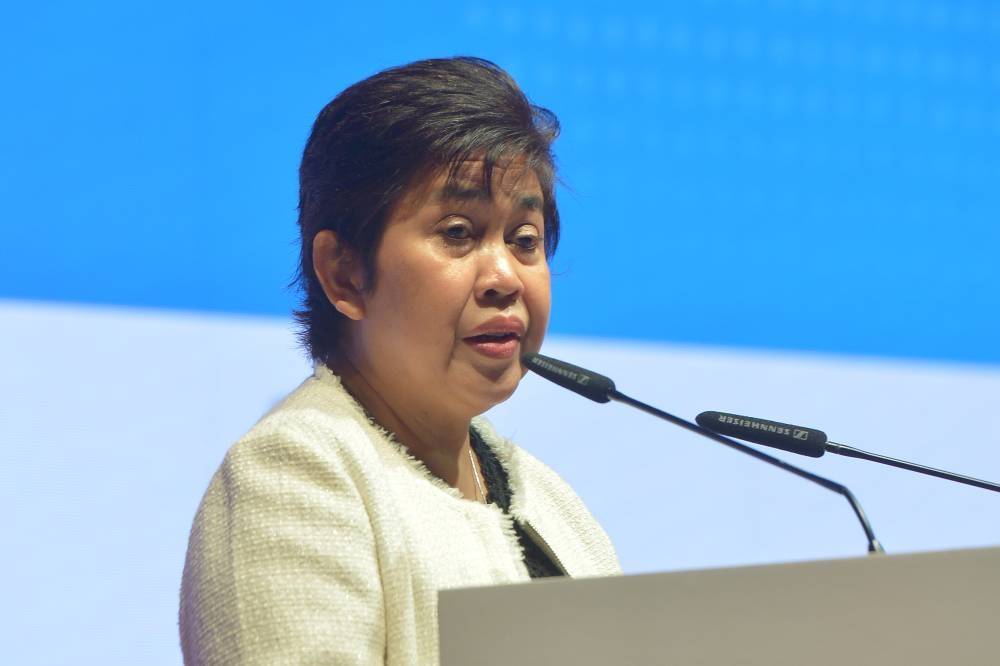Bank Negara Malaysia (BNM) governor Tan Sri Nor Shamsiah Mohd Yunus said Malaysia’s full year 2022 growth will exceed 7 per cent. – Picture by Shafwan Zaidon
Follow us on Instagram, subscribe to our Telegram channel and browser alerts for the latest news you need to know.
KUALA LUMPUR, Nov 11 — Malaysia’s economy grew by 14.2 per cent in the third quarter this year supported by continued expansion in domestic demand, firm recovery in the labour market, robust electrical and electronics (E&E) as well as non-E&E exports and ongoing policy support.
The growth was partly lifted by the low base effect, due to the strict containment measures in the third quarter last year, Bank Negara Malaysia (BNM) governor Tan Sri Nor Shamsiah Mohd Yunus said.
Given the healthy growth in the first nine months of 2022, the full year 2022 growth will exceed the 7 per cent that was projected earlier, said the governor.
“An economic crisis is usually associated with a severe contraction in GDP growth, higher rates of employment, the closure of businesses and a breakdown in financial intermediation.”
“We do not see these indicators. GDP (Gross Domestic Product) has been growing for four consecutive quarters since the fourth quarter of 2021,” she said at a press conference here today.
Nor Shamsiah said the services sector expanded 16.7 per cent, manufacturing 13.2 per cent, agriculture 1.2 per cent, mining 9.2 per cent and construction 15.3 per cent.
For instance, higher consumer-related activities amid the recovery in tourism, better labour market conditions and policy support boosted the services sector, and for the agriculture sector it is the higher oil palm output due to receding labour shortages and improved yields, she said.
2023 GDP to grow at 4-5 per cent, risk arises primarily from external factors
“While the global environment is expected to be challenging in 2023, the Malaysian economy will continue to grow. The economy is projected to grow by 4 per cent to 5 per cent in 2023, and continues to surpass the pre-pandemic level,” she said.
“A steady rise in employment levels and continued improvement in wages are supportive of spending. The continuation of existing and new infrastructure projects and higher tourist arrivals are expected to support growth in 2023.”
Among the infrastructure projects are the East Coast Rail Link valued at RM50 billion, Light Rail Train 3 worth RM16.6 billion, Central Spine Road worth RM7.3 billion and the Jendela Phase 2 amounting to RM8 billion.
The impact of a sharp slowdown in external demand would be partly mitigated by diversified export products and markets.
“Malaysia’s diversified exports would help cushion potential shocks in external demand.”
The governor said risk to growth remains tilted to the downside, arising primarily from external factors, namely weaker-than-expected global growth, escalation of geopolitical tension, worsening supply chain disruptions including the impact from climate change, faster rise in cost of living and inflation, greater financial market volatility as well as political uncertainty. — Bernama



